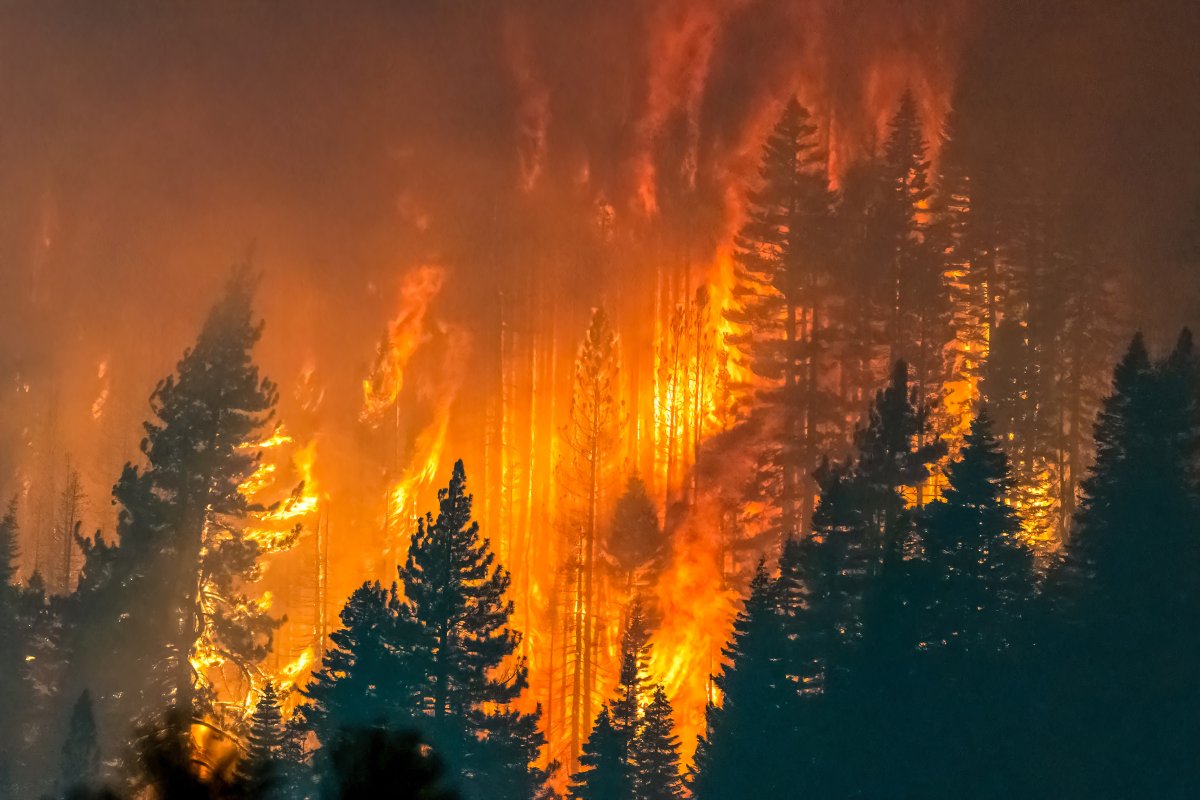A heavy metal that can cause cancer may be spread far and wide via the smoke of wildfires, new research has found.
The carcinogenic form of the metal chromium and other cancer-associated chemicals were found to be present in large quantities in ash after wildfires across Northern California, a new paper in the journal Nature Communications reveals.
In dry environments, this ash may easily be blown towards population centers in the wind, and could therefore pose a long-term public health hazard.
The researchers analyzed the soil after wildfires across Northern California in 2019 and 2020, including in Sonoma, Napa and Lake Counties, finding that there were dangerous levels of chromium in the ash. The chromium was discovered to be most prevalent in areas with an underlying metal-rich geology, and in areas where the fires were more severe.

They found that the wildfire temperatures caused the chromium in the soil to convert to its carcinogenic form, especially in metal-rich soils, discovering between (327 and 13,100 micrograms of chromium per kilogram of wind-dispersable ash.
"High concentrations of hexavalent chromium exist in the surface soils until the next major rainfall," Scott Fendorf, study co-author and professor of Earth system science at Stanford University, told Newsweek.
"The dust generated from the burn scars will be highly toxic. The primary concern is for people who enter the burned area and disturb the soil, thus generating dust that contains the toxic metal. Downwind communities could also be impacted, with the risk depending on how much dust is transported."
Chromium is an essential element in the human body, but only in the form of trivalent chromium, or Cr(III). Hexavalent chromium, or Cr(VI), however, is carcinogenic, and is the form of chromium that has been found in the wildfire ash. According to the United States Environmental Protection Agency, Cr(VI) exposure is strongly linked to lung cancers in humans and animals, as well as acute effects including coughing and wheezing, and even gastrointestinal and neurological effects in high dosages.
"Cr(III) is the primary form of the metal chromium that we find in soils [which comes from the rocks that weathered into soil] and associated plants. Cr(III) wants to react with oxygen in the air, but at ambient temperatures the reaction is really, really slow [except under very alkaline pH values]. However, when the soil and air are heated above 200 C, the heat catalyzes the reaction and now chromium3 is transformed [oxidized] by the oxygen into Cr(VI)," Fendorf said.
"Our evidence for hexavalent chromium (or chromium(VI)—same thing) comes from an analysis of the soils and ash directly after the wildfires. We await direct air monitoring to confirm it is in the smoke. But, we know (1) that it is in the fine particulate matter, including from ash, and (2) air monitoring has noted chromium in the air from wildfire but the specific form wasn't analyzed. Taking these facts together, we think it is highly likely that hexavalent chromium is in the particulates of the smoke."
The researchers also found that drier weather in the aftermath of the fires caused the chromium to stay in the soil and dust for nearly a year.
"Relatively dry post-fire weather contributed to the persistence of elevated hexavalent chromium in surficial soil layers for up to ten months post-fire," the authors wrote.
Wildfires release large quantities of other dangerous substances, including PM2.5 pollution. PM2.5 particles are 2.5 micrometers or less in diameter, and include soot, black carbon, ammonia, sodium chloride and mineral dust, which can all cause respiratory irritation.

The researchers suggest that the chromium left behind in the ash may also pose a large health hazard to people living nearby and first responders, as it will get blown around in the wind. While the study focused on California wildfires, the authors estimate that other regions of the world where soils are rich in heavy metals and fires are frequent face similar problems, including large swaths of West, East and Southeast Africa, Northern Australia and Russia.
As the chromium appears to persist in the soil for longer in drier environments, the effects of climate change may therefore play into both the frequency and severity of wildfires, as well as exacerbating the damaging effects of wildfire pollution in the future.
"We are seeing more frequent and more severe fires with a changing climate. More frequent fires simply means we will be getting more exposure to [toxic] smoke and dust," Fendorf said. "The greater severity means that for areas with chromium, we will also have more of the toxic form generated. The combination of those two factors is not good for health."
Do you have a tip on a science story that Newsweek should be covering? Do you have a question about wildfires? Let us know via science@newsweek.com.
Update 12/14/23, 11:08 p.m. ET: This article was updated with comment from Scott Fendorf.
Uncommon Knowledge
Newsweek is committed to challenging conventional wisdom and finding connections in the search for common ground.
Newsweek is committed to challenging conventional wisdom and finding connections in the search for common ground.
About the writer
Jess Thomson is a Newsweek Science Reporter based in London UK. Her focus is reporting on science, technology and healthcare. ... Read more
To read how Newsweek uses AI as a newsroom tool, Click here.





